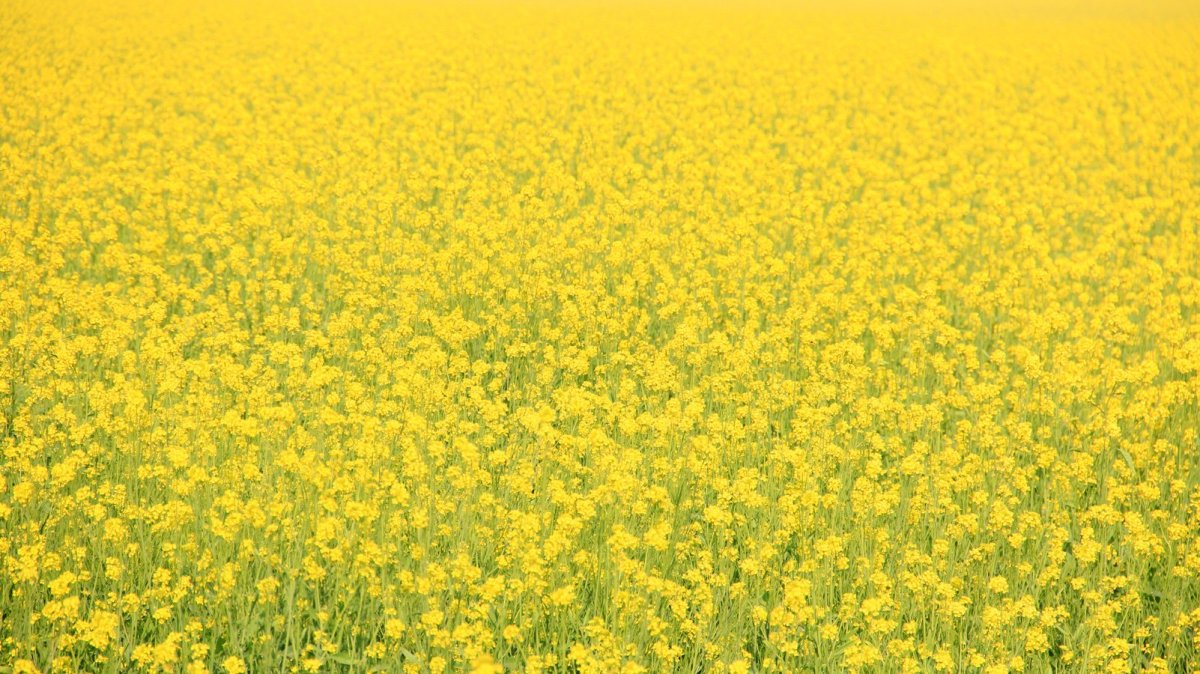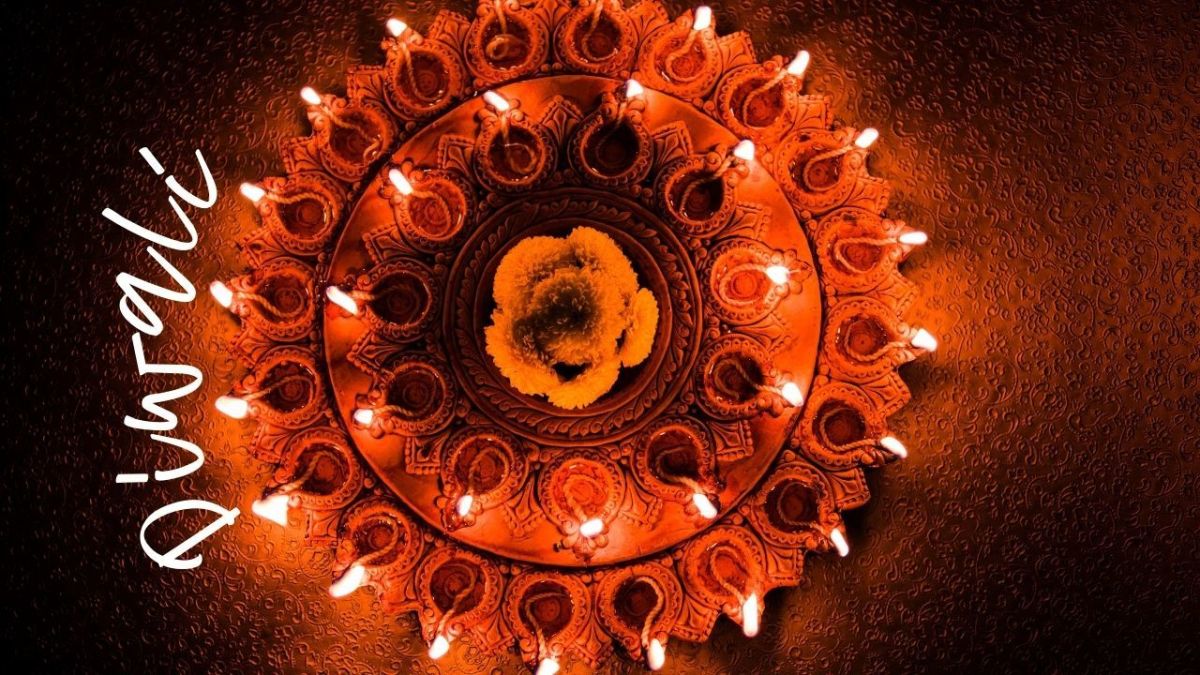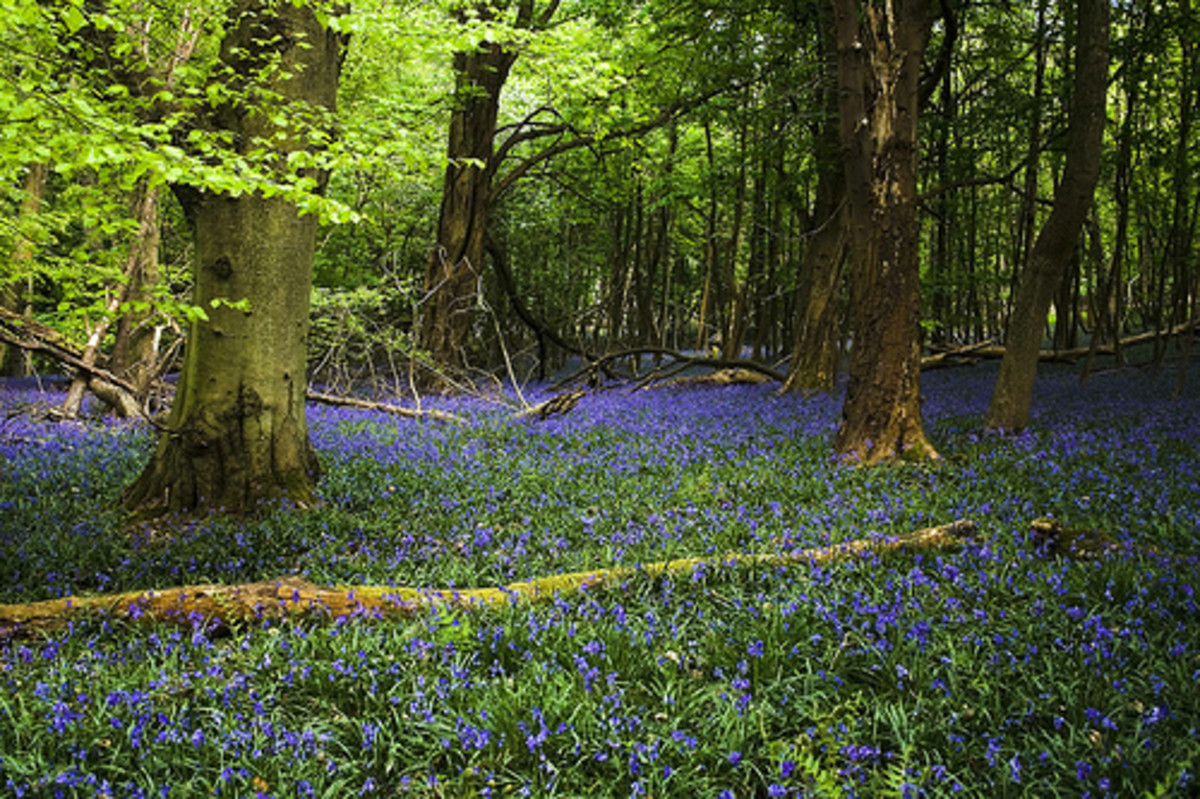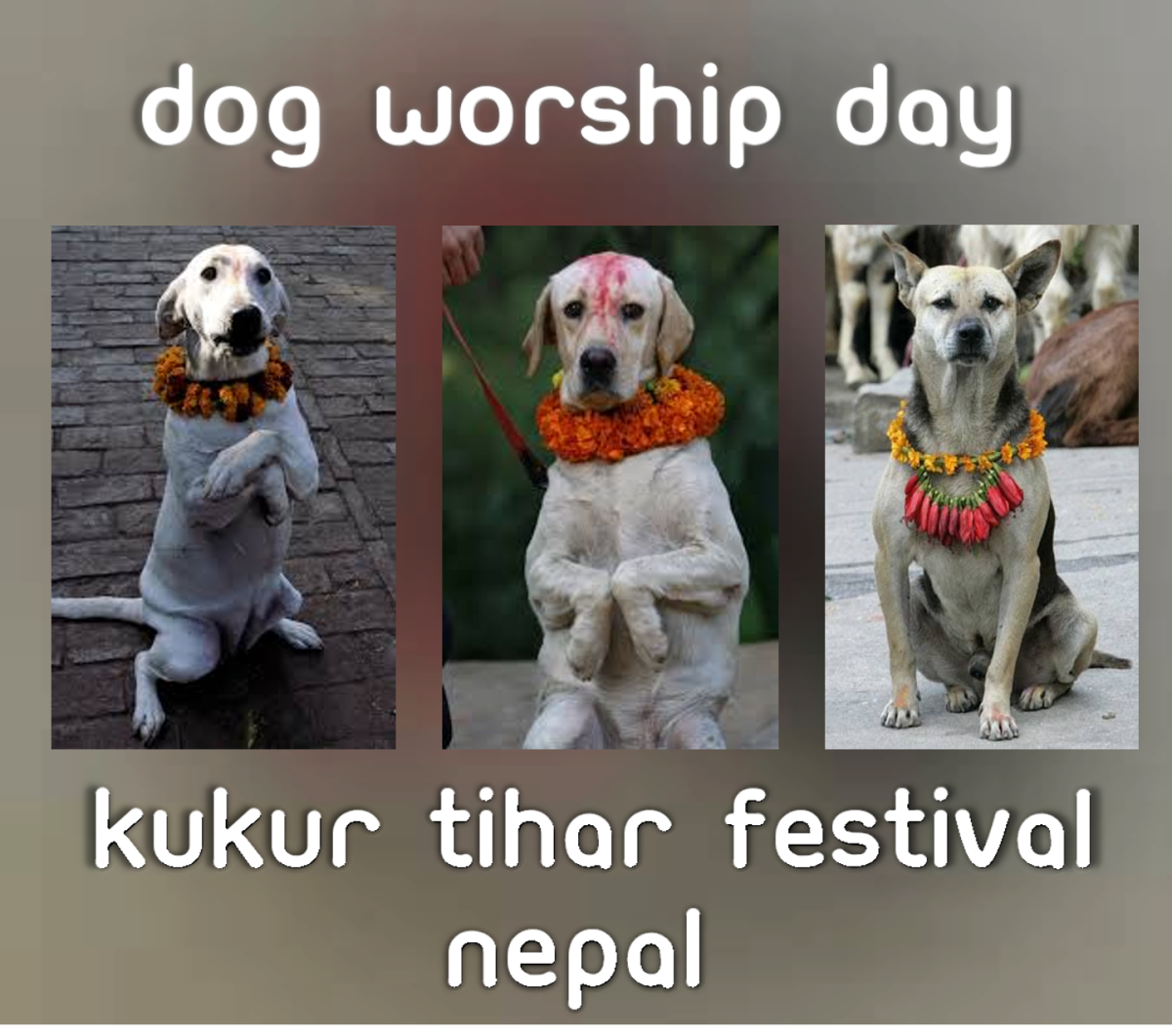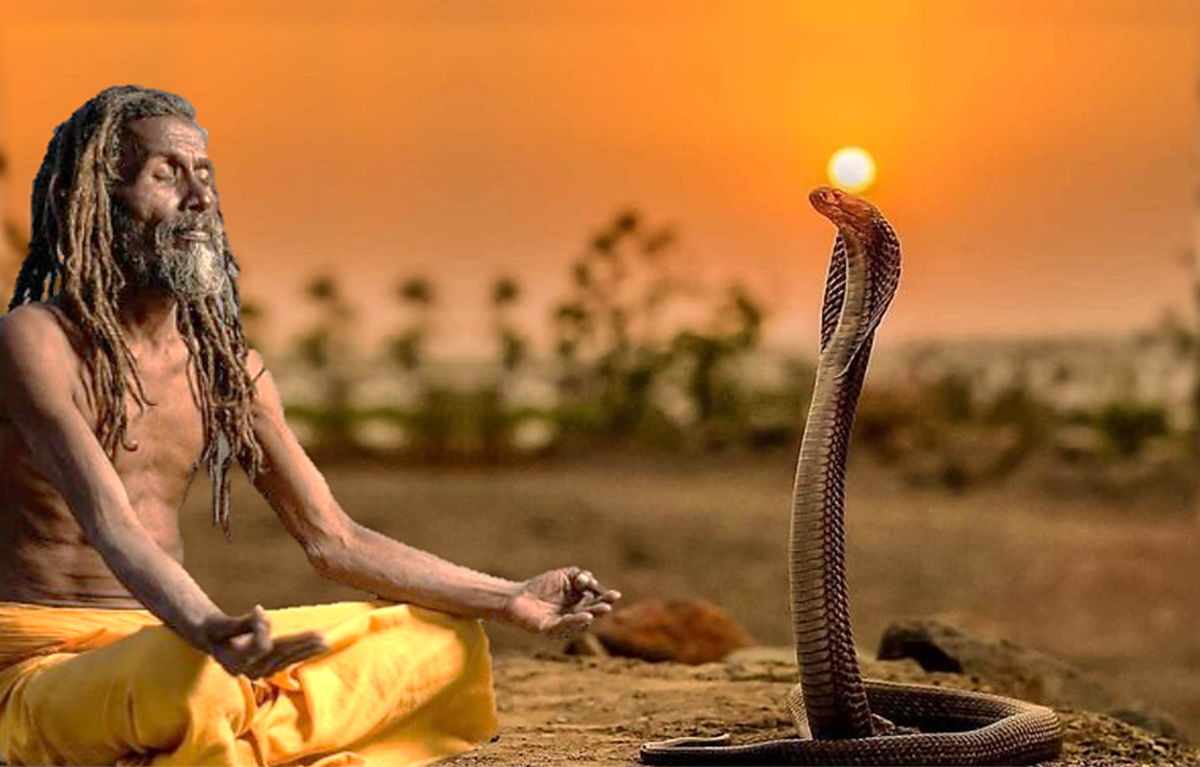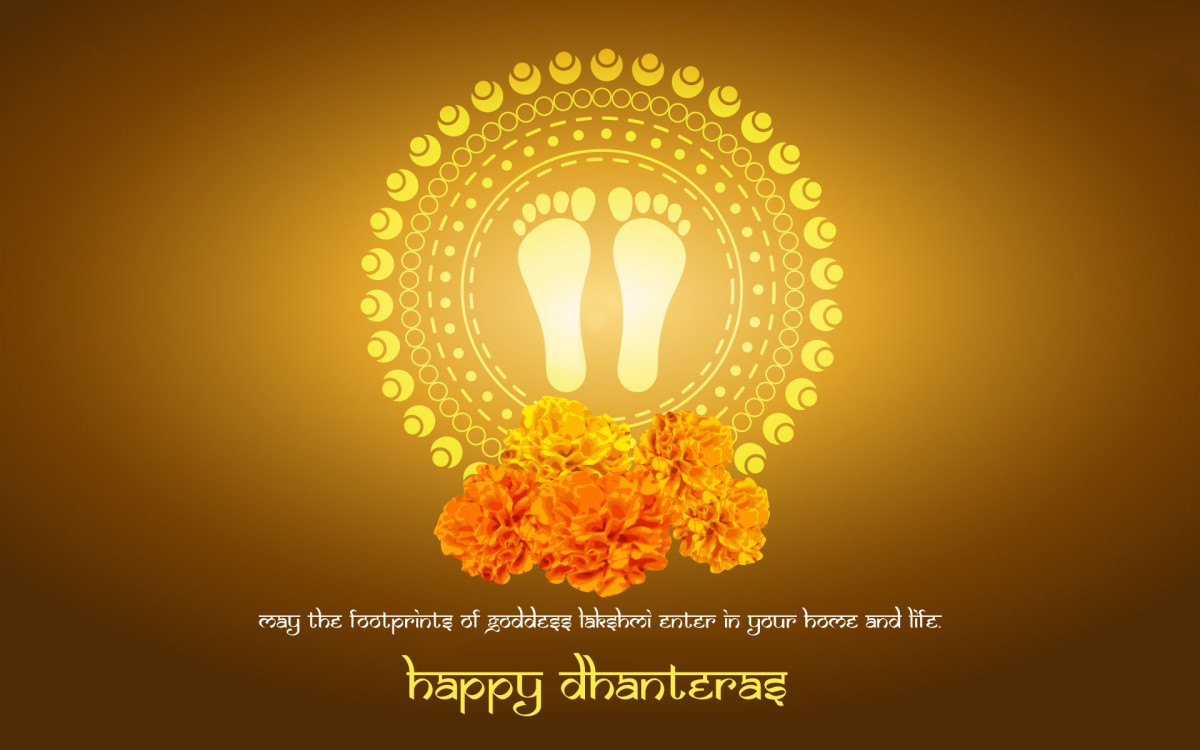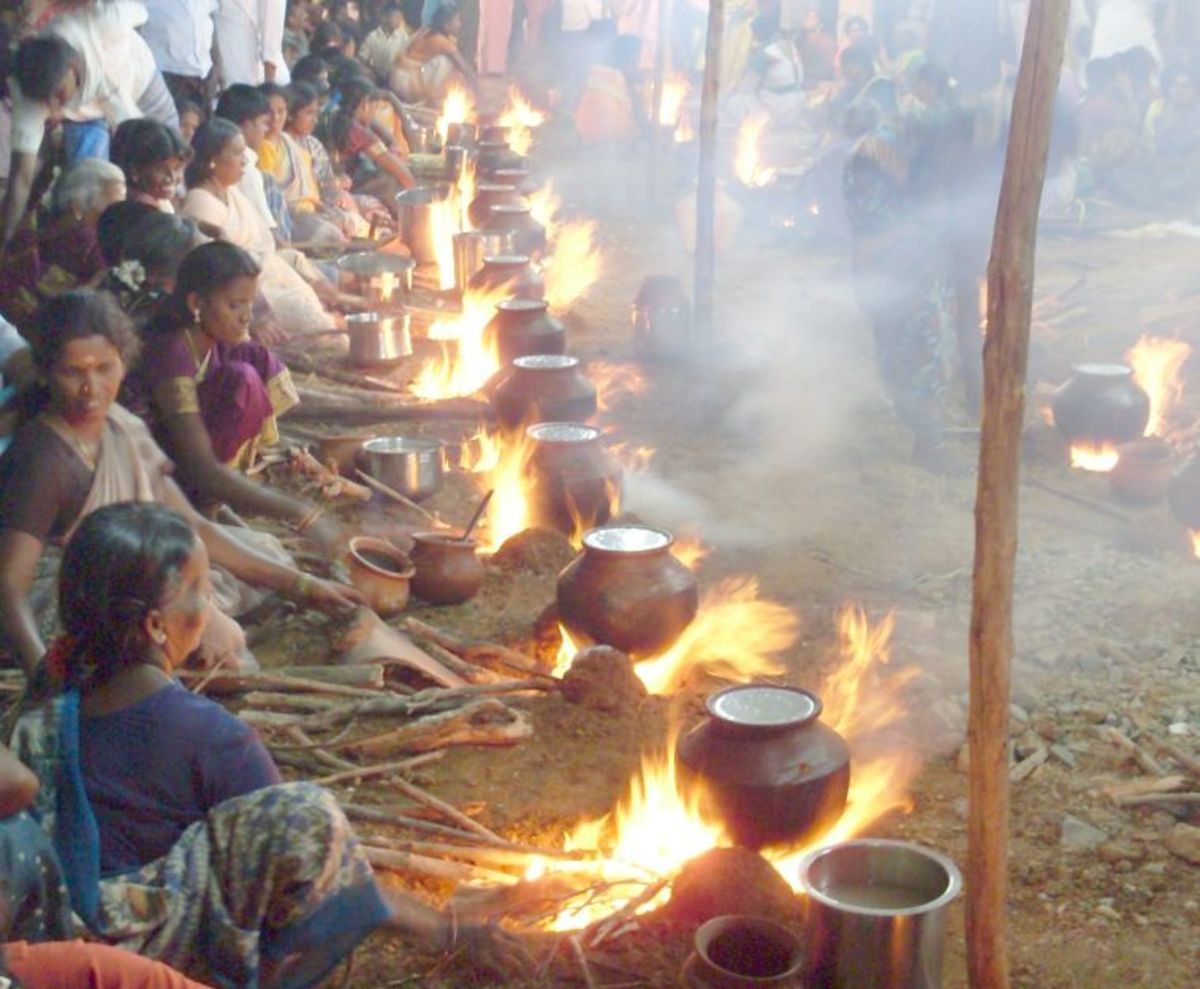Holi-The Indian Festival of Colors

Hinduism is the world's oldest religion. It is often regarded as the 'Mother of all Religions'. The religion has the distinction of having more festivals and celebrations than any other religions. Thus, the festivity in India never ends for it is the land of world's largest concentration of Hindus. Earlier I had written a hub on Diwali, the most spectacular and celebrated festival of India. That article is available on a mouse click here: Please click on "Diwali". And this time I joyfully take you to the amazing features of yet another grand festival of India-the Holi.
If Diwali is the festival of Lights, Holi is the festival of Colors. It is usually celebrated during February or March. The festival is observed on the full moon day (Poornima) in the month of Phalgun, according to the Hindu calendar. Holi is probably the only Hindu festival without any ritual worship. All other Hindu festivals have some type of ritual worship. Mahashiivaratri, Diwali, Ganesh Chaturthi, Navaratri or Durga Pooja are a few examples.
Holi is a social celebration. The entire society comes together to drown all differences in the mist of colors. In the evening, Holika is burnt. A great pile of wood, twigs and dried up grass is made to represent Holika, which is set on fire after worship.
Holi is also the spring festival of the Hindus. It commemorates the saving of Prahlad and burning of his wicked aunt Holika. You would read the story related to all these on the later part of this hub.
On the day of Holi, adults and kids, all alike splash each other with a colored powder called 'gulal' and water throng 'pichkaris'. Then all dance enthusiastically. The procession of people through the streets and roads of villages, towns and cities carrying a pot with colored water is a common sight on the festival day. They sing and dance fervently.
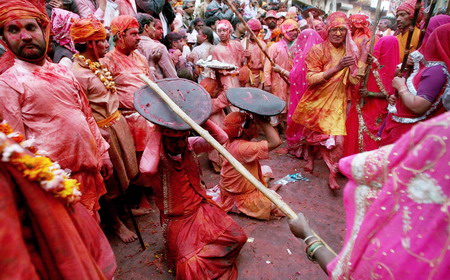
it is an occasion for revelry. Though traditionally only natural colors extracted or prepared from flowers and herbal products were used, the case is different today. Now, artificial colors are used and people often use colored foams. Balloons filled with colored water are thrown at anybody, they can play pranks upon. No one questions this act as it is a part and parcel of the festivity. The colors soon washes away and so do all the enmity among the people and it even serves to bring the community closer.
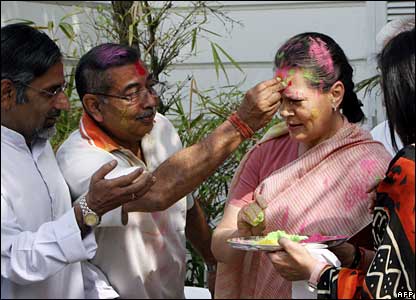
Delicious Treats
As usual and common to all festivals, sweets and delicacies are an important part of Holi too. People exchange sweets and visit temples. The celebration is more grand on the northern part of India. The capital city of Delhi witnesses the large celebration. You could even witness pure and simple splashing of colored water using 'pichkaris' (water guns) or just pouring it over at any individual or at the dignitaries like Ministers and leaders there. As said earlier, the festival is more vibrant in North India. In South India, it is celebrated with less fanfare.
Though I am living in a South Indian city by name 'Kozhikode' (Calicut), here we have some sort of fine celebration for Holi thanks to the large concentration of the North Indian people in the city. Most of them are businessmen and rich. Naturally their richness is reflected in the celebrations too.
The story related to Holi
There was a demon king named Hiranyakashipu, who triumphed over the Kingdom of Earth and ordered everybody to worship him and not God. However, his little son Prahlad refused to do so and continued to worship Lord Vishnu, the Hindu God. He tried to kill him, but Lord Vishnu saved Prahlad many times. One of the sisters of the king named Holika had powers to walk through fire unharmed. Thus, he ordered her to kill Prahlad by walking through the fire with him. However, Lord Vishnu came to his rescue and Prahlad was saved while Holika perished. She and her brother were unaware that her powers were only effective if she entered the fire alone.
Even today, bonfires are lit on the night of Holi in memory of the event and the burning of the wicked aunt Holika. (Courtesy: Fairs & Festivals of India by S.P. Sharma & Seema Gupta).
Festivities never end in India. Holi, the festival of colors, fun and pranks are being celebrated with great enthusiasm and fanfare. It is also the festival of spring and the festival of romance. Above all, Holi is the festival of the triumph of good over evil. This time, Holi comes on 13th April 2017.
"Bura na mano, Holi hai: (Don't be angry, it is Holi). Just by shouting so, all the offences and anger get dissolved. This shout is considered to be a part of the long tradition of Holi festival and it has a magical impact too. No one shouts at you if his face and dress are poured with a heavy splash of colors, provided you utter "Bura no mano, ye Holi Hai"!
Yes, don't be angry; it is Holi!
- The Mantra for Wealth and Prosperity
Mantras are good for good luck and prosperity. Kanakadhara Strotra is very beneficial if you chant every day. Shankaracharya, the renowned Philosopher wrote it. Read this article which carries a 'Mantra' for enhancing your wealth and prosperity.
- Seven Wonderful Tips for Good Luck-Feng Shui Solution
Feng Shui helps you in many ways to improve your over all good luck. Your Career luck, Education Luck, Marriage prospects, Romance, luck and everything can be enhanced using certain Feng Shui techniques. Read this hub read by nearly 7000 people.

